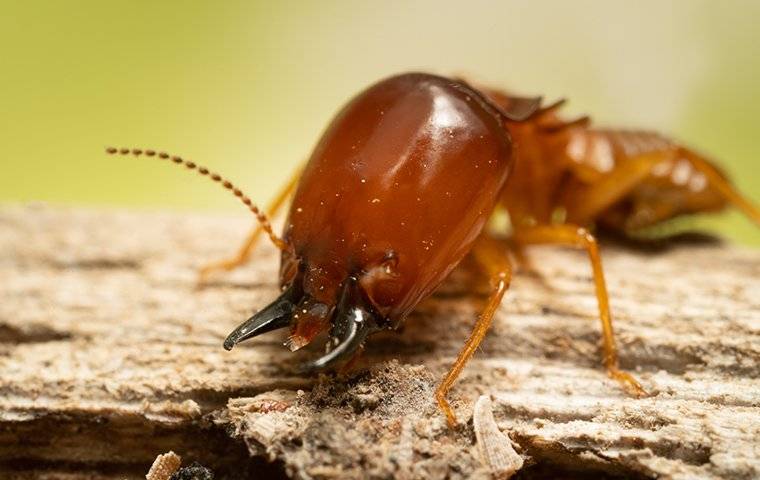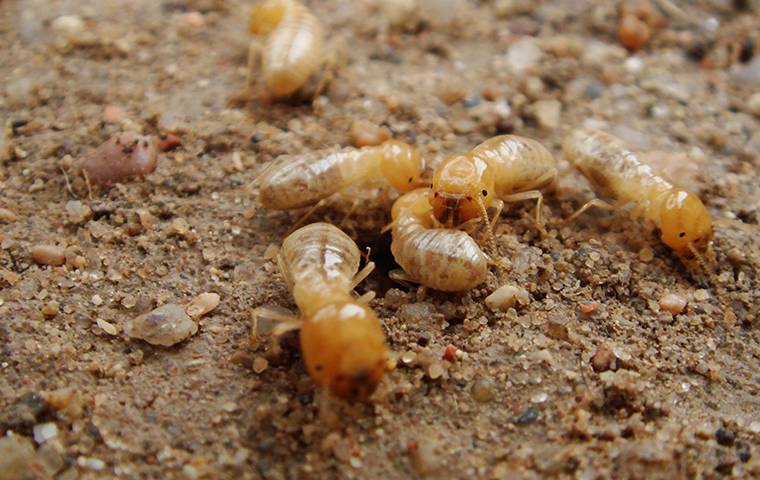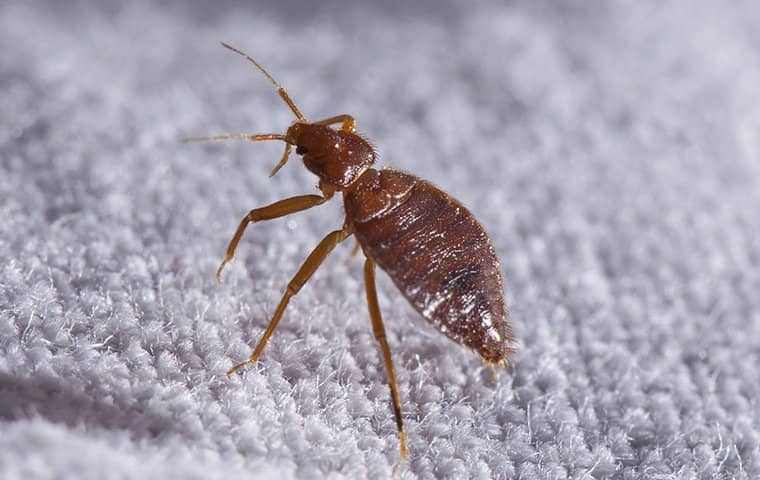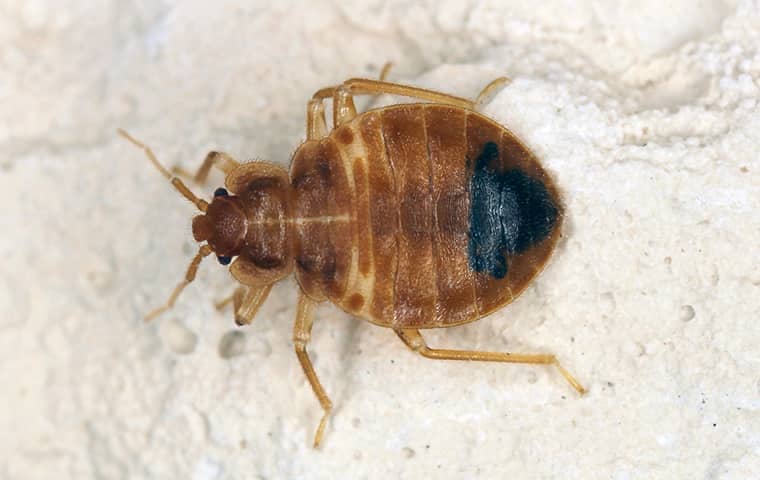There are four stages to successful termite control. If you're hoping to keep termites in Raleigh at bay, you need to know the basics about each stage. What are the stages? The first is recognizing you have a termite problem. Termites are sneaky. If you aren't watching for them, you aren't likely to catch them red-handed. The second is evaluating the threat termites present to your home. The third is understanding how they get into your home. Knowing facts about how termites behave and get in and out of your home can help you prevent termite damage and select the right control solution if termites start to damage your property. The fourth is applying a control method for immediate correction of a termite problem and long-term termite control and prevention. Today, we're going to cover all of these stages and walk you through the proven techniques for successful termite control. We'll explain ways to stop termites and provide insights into how professional termite removal and prevention can give you extra protection. If you currently have a termite problem and you need advice, remember that we're here for you. Your Go-Forth Pest Control team provides advanced pest control in Raleigh, and we have experience dealing with termites in our region of the country.


How To Identify Termites: Types, Behaviors, And Warning Signs
If you hope to find termites in Raleigh and catch them early, you need to be aware of the different kinds of termites living in a termite colony. All termites do not behave the same way, and the warning signs they provide are different. Let's quickly look at them and discuss the difference in type, behavior, and warning signs.
- Swarmers: When a colony matures, it produces winged reproductives. These termites are called swarmers because they gather into a swarm. Swarmers are black insects with long white wings that hang past the end of their abdomens. The entire length of a swarmer is about ⅜ inches. That is incredibly small, so you won't easily see one if it is not flying with the group. It is essential to understand that swarms don't last long, and it is easy to miss them. But you may not have to see a swarm to identify one. These reproductives shed their wings during the mating process. Look for piles of wings on the ground, dark spaces, or spider webs.
- Queens And Kings: As winged reproductives swarm, they pair off. These pairs become the queens and kings of new colonies. Not every pair will survive this process. In fact, most don't. But the few that do will create new nests on or near your property. You won't see these two because they live deep in the ground. You'll have to try to spot the workers or soldiers of these new colonies. We don't recommend waiting to see new swarmers appearing, as it takes several years for a colony to produce winged reproductives.
-
Workers And Soldiers: These termites tunnel in the ground and live entirely concealed in darkness. As they attempt to access the wood of your home, they may crawl up through foundation cracks or build mud structures on your foundation. These mud structures are called shelter tubes. A worker termite is pale in coloration and about ⅛ of an inch long. Soldiers are slightly larger, with orange heads and black pincers. Look for both underneath dead branches, leaf piles, and wood sources in your yard.
Now that you know a bit about the types of termites in your yard, let's look at what it means to find termites. Understanding the termite threat is critical when considering control and prevention
Understanding The Termite Threat: Why Termites Infest Homes
When you catch termites in your yard or home, you need to understand what you've found. If you don't, you may allow these insects to damage your property. We described the types, behavior, and warning signs; now, let's discuss what they mean.
- Swarmers In The House: When you see swarmers in your home, you know you're in trouble. A few dozen black insects with white wings are likely to catch your attention. But you may not realize what you're looking at. Some Raleigh residents suck these insects up with a vacuum and consider the problem solved because they don't realize what it means to have swarmers in the house. It is a warning sign of a mature nest close to the home and a significant infestation.
- Swarmers In The Yard: When you see swarmers in your yard, you may not know you're in trouble. You might think they're just passing through, but termites don't pass through. Swarmers don't travel far before creating new nests. Seeing them in your yard is a warning that workers are applying pressure on your home.
- Workers In The Yard: When you find workers in your yard, it is going to get you thinking. Are they damaging my home? How many of them are there? Will they go away on their own? The reality is that they aren't going away, and they are likely to damage your home. Termites eat wood, and every Raleigh home has wood in it. So, the problem is going to only get worse.
- Shelter Tubes: When you see shelter tubes, it is a sure sign that termites are accessing the wood of your home. These mud structures are typically found in areas where sunlight is blocked.
If you detect signs of termites in your yard or home, the next step is to consider control options. But what if you don't see them? What can you do to keep termites out of your Raleigh property? Let's take a look at termite prevention methods.
Protecting Your Property: Effective Termite Prevention Methods
There are two ways to proactively prevent termite damage. One is to alter conditions that prompt termites to encroach upon your property and increase their populations. When you alter these conditions, you reduce the pressure termites apply to your exterior and reduce the risk that they'll find a pathway into the wood of your home. The second is to apply a control product to prevent termites. An effective control product should provide a way for you to not only eliminate invading termite colonies but easily detect their presence. We believe termite bait accomplishes both of these with efficacy.
Altering Conditions That Prompt Termite Infestations: Termites are looking for food. They eat materials that have cellulose. The most obvious is decaying wood, such as dead branches, dying trees, stumps, and logs. But they'll also eat paper, cardboard, clothing, and other man-made items. It is critical to keep all termite food sources off the ground and refrain from burying any of these in your yard. Along with removing wood sources, address all wood-to-ground contact on structures. If wood enters the ground, termites have a direct path to enter your home.
Applying Termite Bait For Effective Prevention: There are only two methods professionals use to control termites: Liquid termiticides and bait. When termiticides are used, there is no easy way to detect termite activity. Your professional will need to look for evidence of termite damage and other warning signs. But, as we've already pointed out, these signs aren't easy to detect. The better solution is bait. The bait stations sit in the ground where termite workers will find them. When the bait is taken, it is easy to tell. So, as you are continually offering a control material to eliminate colonies, you also have a way to check for termite activity on your property. But not all termite baits are equal to the task of protecting your property. The experts here at Go-Forth Pest Control trust The Sentricon® System with Always Active™. It is an award-winning product with decades of real-world success, and no other product comes close to having as much research and laboratory testing or as many university papers written about it.
Now that you know how to actively prevent termite damage, it is time to look at termite control. But it may surprise you to learn that control and prevention are one and the same. Here's what you need to know if you ever find termites damaging your property.
Professional Termite Control: Long-Term Termite Control And Protection
When termites get into your home, they're not going to stay inside. They will go in and out. It is what they do. And, as they move about, they will continue to look for other food sources. Termites don't focus on one source. The workers draw from several places at the same time. Therefore, they are sure to find the bait positioned around your home if you have The Sentricon® System installed. No other control method is required to arrest an interior infestation. You simply have Sentricon® installed by a certified installer, and your technician will manage your station to apply appropriate levels of control and keep you informed when termite activity ceases.
For professional termite control in Raleigh, contact your Certified Sentricon® Installers at Go-Forth Pest Control for award-winning, environmentally-friendly termite control and prevention you can trust. You don't have to battle termites on your own. We're here to help. Reach out today to get started and to learn more about our residential and commercial pest control services Raleigh.





